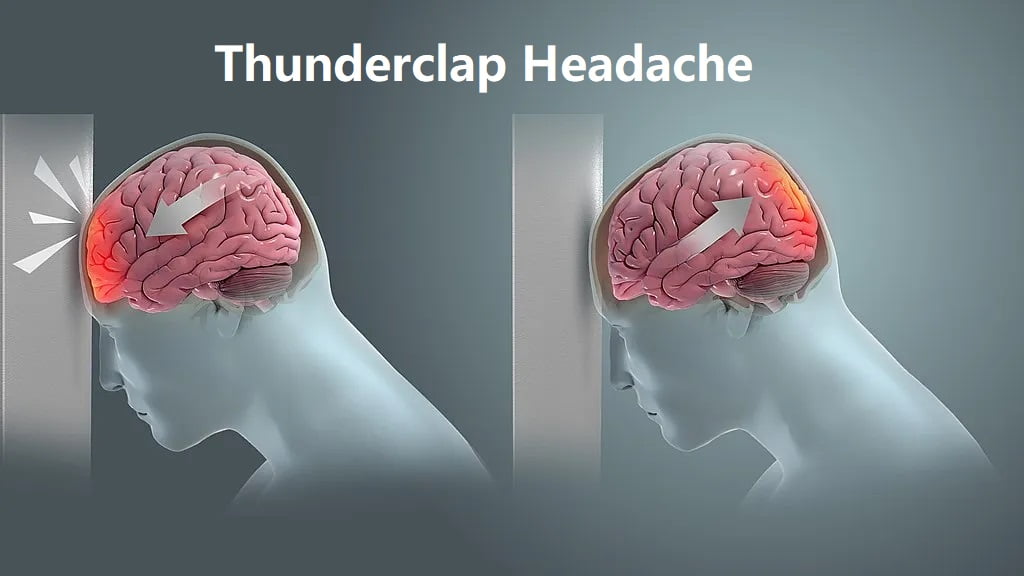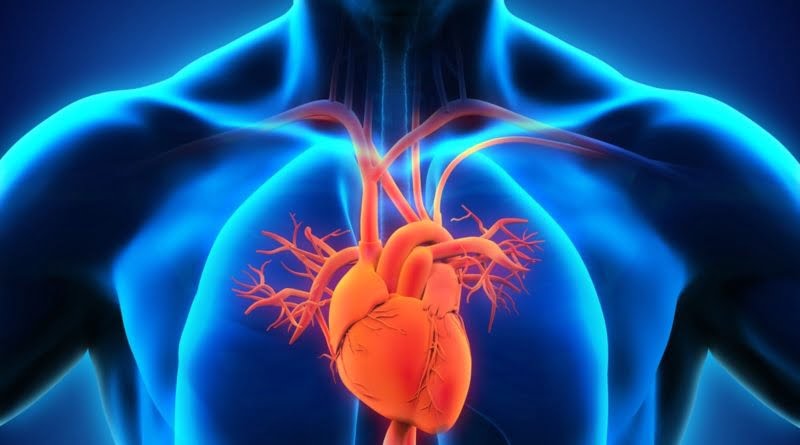Thunderclap Headache | An Overview with Causes & Treatment 2025

Thunderclap headaches are intense headaches that come on suddenly, often reaching maximum intensity within one minute. They can be excruciating and are considered a medical emergency. In this article, we will provide an overview of thunderclap headaches, their causes, symptoms, diagnosis, and treatments.
What is a Thunderclap Headache?
A thunderclap headache is a severe headache that comes on abruptly and reaches peak intensity quickly, usually within one minute. The pain is often described as the “worst headache of your life” and may feel like being hit on the head with a hammer.
Some key features of thunderclap headaches:
- Sudden, intense onset – reaches maximum pain within 1 minute
- Often described as the “worst headache ever”
- Pain is often localized to one part of the head, but can be diffuse
- Lasts from a few minutes to several hours
- This may recur over the following days or weeks
While called “thunderclap” due to the sudden and severe onset, the pain does not necessarily feel like a clap of thunder. The name reflects how quickly the headache reaches peak intensity, like a thunderclap exploding after a lightning strike.
What Causes Thunderclap Headaches?
There are several potential causes of thunderclap headaches:
Cerebral hemorrhage
A ruptured aneurysm or arteriovenous malformation (AVM) that causes bleeding in the brain is the most common cause of thunderclap headaches. This is a medical emergency.
Reversible cerebral vasoconstriction syndrome (RCVS)
Sudden constriction of arteries in the brain causes thunderclap headaches in RCVS. Often recurs over days/weeks before resolving.
Idiopathic thunderclap headache
No underlying cause was found. Considered a primary headache disorder.
Medication overuse headache
Overuse of certain medications like opioids, barbiturates, and triptans can cause rebound headaches.
Head injury
Blows to the head may cause thunderclap headaches, often indicating intracranial hemorrhage.
Cervical artery dissection
A tear in the vertebral or internal carotid artery lining can obstruct blood flow to the brain, causing a headache.
Pituitary apoplexy
Bleeding into a pituitary tumor can cause sudden, severe headaches.
Reversible cerebral vasoconstriction syndrome
Artery spasms reduce blood flow to the brain, triggering headaches.
Sexual activity
Straining or sudden changes in blood pressure during sex are linked to thunderclap headaches.
Coughing or exercise
Activities that change blood pressure quickly can provoke thunderclap headaches.
In up to 30% of cases, no cause is found, and the headache is considered a primary thunderclap headache.
Thunderclap Headache Symptoms

- Severe, explosive headache reaching maximum intensity within 1 minute
- Pain often focuses on one area of the head, but can diffuse
- Pain is described as “excruciating,” “the worst ever.” A headache lasts from a few minutes to several hours
- Some recurrent headaches over days to weeks, even when the cause is treated
- Nausea and vomiting
- Light and sound sensitivity
- Vision changes – blurry, double, loss of vision
- Weakness or numbness on one side of the body
- Loss of consciousness
- Confusion
- Seizures
Any of these neurological symptoms can indicate a serious underlying cause, like a hemorrhage. Seek emergency care immediately if you experience a sudden, severe headache along with neurological disturbances.
Diagnosing Thunderclap Headaches
To diagnose a thunderclap headache, doctors take a detailed history asking about:
- Onset, location, severity, and duration of headache
- Associated symptoms like nausea, sensory changes, and weakness
- Recent head injury or activities that could provoke a headache
- Medical history, including previous severe headaches
- Medication use
Diagnostic tests aid in identifying the cause:
CT or MRI scans – Look for bleeding, tumors, or other brain abnormalities
Lumbar puncture – To analyze spinal fluid for bleeding or infection
Angiography – Visualizes blood vessels in the brain to detect aneurysms or narrowing
Toxicology screening – Checks for medication overuse or illicit drugs
Once a cause is found, targeted treatment can begin quickly. If no cause is found, the patient may be monitored in the hospital for recurrent headaches, indicating underlying vascular issues.
Treating Thunderclap Headaches
Treatment depends on the cause but focuses on stabilizing the patient and relieving head pain.
For headaches due to hemorrhage:
- Hospitalization in intensive care for monitoring
- Medications to reduce blood pressure and intracranial pressure
- Surgery to repair a ruptured aneurysm and stop bleeding
For RCVS or primary thunderclap headaches:
- Pain medications like acetaminophen, NSAIDs, and steroids
- Preventive medications such as calcium channel blockers, tricyclic antidepressants
- Avoiding potential headache triggers
For medication overuse headache:
- Stopping the overused medication
- Preventive medications to reduce headache recurrence
For cervical artery dissection:
- Anticoagulant drugs to prevent clotting and stroke
- Surgery to repair the torn artery in some cases
Patients with thunderclap headaches need immediate evaluation in the ER. Quick diagnosis and treatment are crucial to minimize complications, disability, and death. Those with recurring headaches may need monitoring and medications to prevent future attacks.
Key Takeaways on Thunderclap Headaches
- Thunderclap headaches are sudden, extremely severe headaches that reach peak intensity within 1 minute.
- They can be caused by bleeding in the brain, arterial narrowing or spasms, tumors, overmedication, and other issues.
- In some cases, no cause is found, but recurrence still indicates a high-risk condition.
- Thunderclap headaches require emergency medical care to diagnose the cause and check for neurological symptoms.
- Treatment focuses on stopping bleeding if present, restoring blood flow, relieving head pain, and preventing recurrences.
- Prompt evaluation and treatment are essential for these dangerous headache attacks to prevent disability or death.
Frequently Asked Questions about Thunderclap Headaches
Here are answers to some common questions about thunderclap headaches.
What causes most thunderclap headaches?
The most common cause of thunderclap headaches is bleeding in the brain from a ruptured aneurysm or AVM. This is a medical emergency requiring rapid treatment.
How can you tell a thunderclap headache from a migraine?
Migraines usually take longer than 1 minute to reach peak intensity. Migraines also cause other symptoms like sensitivity to light/sound, nausea, and visual disturbances, which thunderclap headaches can also have. The key difference is the sudden, extremely severe pain of a thunderclap headache.
Are thunderclap headaches fatal?
They can be. Thunderclap headaches are considered a medical emergency. If caused by bleeding in the brain, there is a high risk of severe disability or death if not treated immediately. Even if not fatal, they indicate an underlying vascular condition needing rapid diagnosis.
Can you prevent thunderclap headaches?
If an underlying cause is found, treating it can prevent recurrence. Good blood pressure control, avoiding certain medications, and preventing head injury may reduce risk in those prone to thunderclap headaches. But often the first episode occurs without warning.
What should you do for a thunderclap headache?
At the first sign of a sudden, extremely severe headache, call 911 or go to the nearest emergency room immediately. Timely diagnosis and treatment are critical to avoid catastrophic outcomes of thunderclap headaches.
How are thunderclap headaches diagnosed?
Doctors take a medical history and perform a neurological exam. Brain imaging, such as CT or MRI scscanssare used to visualize brain structure. A spinal tap can check for bleeding or infection. Angiography looks for aneurysms and artery narrowing. Tests are done rapidly to find the cause.
What medications treat thunderclap headaches?
Medications for immediate pain relief include acetaminophen, NSAIDs, opioids, and steroids. Preventive medications like calcium channel blockers and tricyclic antidepressants may be used if headaches recur. The main treatment focuses on stopping bleeding and restoring blood flow to the brain.
Conclusion
Thunderclap headaches are intense, explosive headaches that constitute a medical emergency. They require prompt evaluation and targeted treatment to find the underlying cause and minimize the risk of severe complications or death. Those experiencing the “worst headache of their life” with sudden, severe onset should seek emergency medical care immediately for proper diagnosis and management of these dangerous headaches. With rapid treatment guided by clinical findings, outcomes can be significantly improved.



